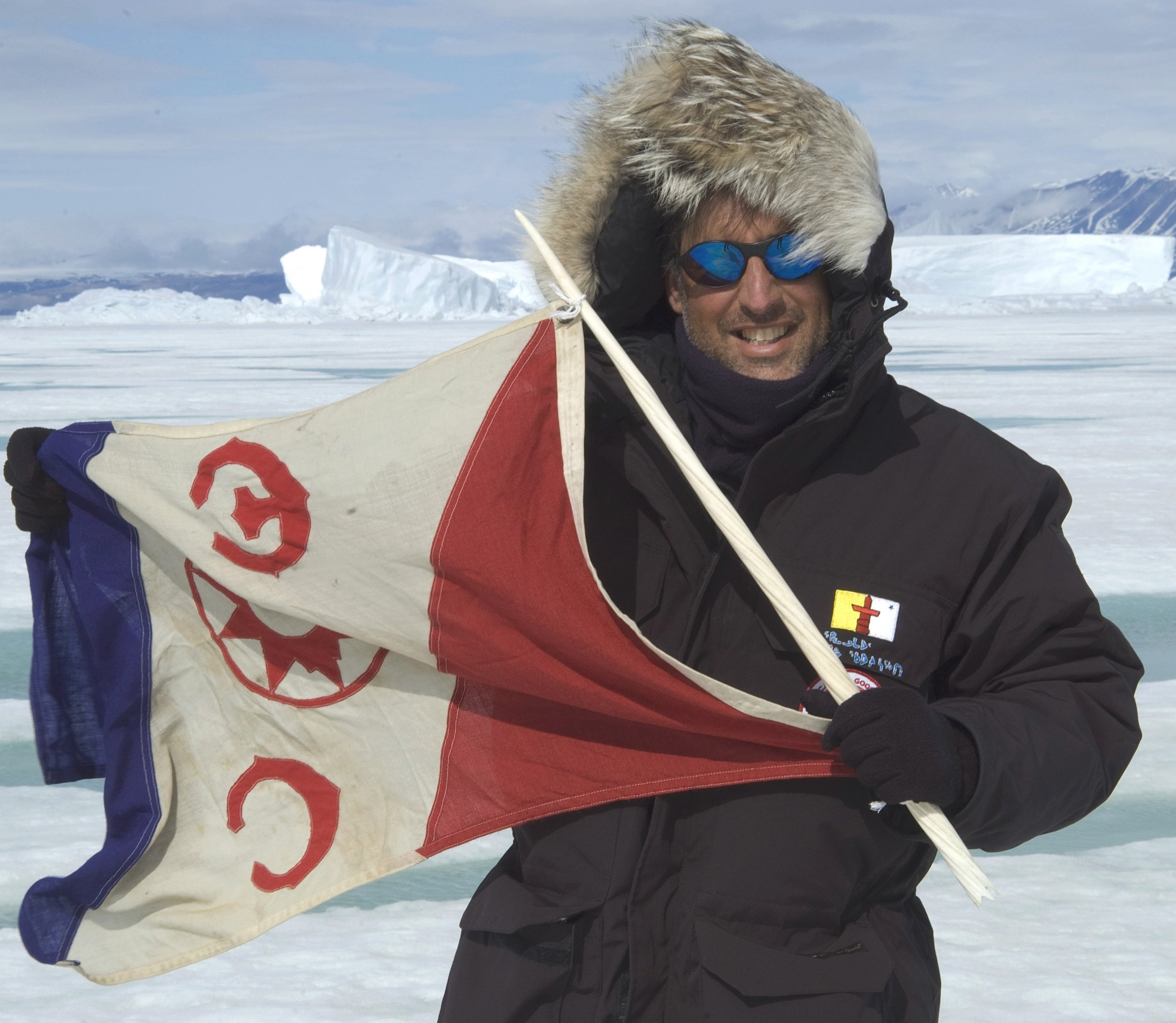A 25-year dive into marine biology following this magical creature
Dr. Nweeia: Country Dentist & Narwhal Expert
Dr. Martin Nweeia examines teeth on a near-daily basis, but there is one type of tooth that has long held his fascination- one that has taken him to some of the world's most remote and isolated areas.
For more than 25 years, the Sharon, Connecticut-based dentist, leading a team of researchers, has been examining the form, purpose and function of the long, straight and spiraled tusk of the narwhal, Primarily found in males; it is a canine tooth that grows from the upper jaw -- sometimes up to ten feet long. "I think it is an animal that stimulates the imagination of the child within us all," said Nweeia, a marine mammal dental expert and one of the world’s top narwhal scientists.
Awards & Honors
A Commitment to Narwhals with 20 Arctic Expeditions
As a National Science Foundation Scientist and Harvard Research Scientist, Nweeia has led over 20 high Arctic expeditions and carried 16 Explorers Flags to study the elusive narwhal.
“There are so many properties of the narwhal tusk that defy every principle and property of teeth that I ever learned in dental school,” said Dr. Nweeia. “The diet of the narwhal includes some pretty large fish. And yet, this whale, which can produce more than a dozen teeth in its mouth, genetically silences them. No, we don’t need those teeth. Instead, what we’d rather have is this giant tusk that erupts through our lip into the frigid ocean,” comments Nweeia
“All mammalian teeth patterns are symmetrical. But a narwhal typically has this eight- to nine-foot tusk on the left, and on the right side, nothing visible. Typically, in mammals, females have the same distribution of teeth as males; narwhals couldn’t be more different. The males typically have the tusk, and the females do not.”
Learning from the Arctic’s Original Explorers
Because the Inuit are legally allowed to do subsistence hunting on narwhals, Nweeia was able to get remnants from them and take samples back home. The Inuit already described the tusks more comprehensively than anyone in Western science. They could tell from a tusk where a particular animal was from, which Nweeia found extraordinary: A shorter, thicker task would mean that they came from further north; longer and more thin tusks came from further south.
They knew the female tusk, when present, is thinner and more tightly wound. The tusk seems very rigid, but when he was in the field with Inuit hunters, they would say, “Oh, no, no, the tusk bends and flexes.” Most scientists, including myself and other dental experts, thought that would be impossible. So Nweeia got the material back in the lab, and to everyone’s surprise, except the Inuit, the tusk was found to have flexibility that enabled it to bend and flex 12 degrees in all directions. Nweeia realized that Inuit traditional knowledge was a pivotal link to inform and guide the science.
Great Amateurs in Science
Dr. Nweeia joins a pantheon of discoverers, many of whom had no formal scientific training, who have made extraordinary scientific contributions.
Often overlooked by the experts in their fields, they made contributions recognized sometimes long after they were gone. Who are they? They are amateur scientists who excel in other fields — people like Thomas Jefferson, Michael Faraday, and Arthur C. Clarke— whose groundbreaking work occasionally leaves their professional counterparts envious. Against the odds, they’ve carved out a remarkable legacy in the history of science.
Can a Tooth be a Sensory Organ? Yes, if You're A Narwhal
Working at The Woods Hole Oceanographic Institution, The National Institutes of Health and The Johns Hopkins University, Nweeia organized CT scans of the tusk and head, which could help to better understand the underlying anatomy.
Electron microscopy, scanning electron microscopy, and a special technique of analyzing the ratios of hard and soft tissue components of teeth called Fournier Transform Infra-read Microspectroscopy or FTIR helped Dr. Nweeia gain insights into the unique properties of the narwhal tusk, including its unusual properties of strength and flexibility combined and the flexibility that was told to him by Inuit hunters.
“The tusk is opposite from our teeth, which are hard on the outside and softer as they go in. Narwhal teeth are very flexible on the outside. As you get to the core where the nerve is, the tusk is like an iron rod. In 2005, Nweeia and a team of scientists released work supporting the tusk as a sensory organ.
Over a nine-foot section of tusk, there are about 10 million sensory connections to the Narwhal’s ocean environment through dentinal tubules. “All mammals have dentinal tubules, connections within the dentin portion of teeth,” Nweeia noted. “The difference with narwhals is that they’re open, from the inside nerve to the outside of the tooth.”
By 2014, Nweeia was finally able to prove (link to article) that a tusk in a living animal could sense its environment. Working with Fisheries and Oceans Canada, his team captured whales in a net and brought them to shore for half an hour to be tagged and analyzed.
While other team members were tagging the narwhal, Nweeia attached a plexiglass gasket to a small section of tusk and filled it with alternating solutions of salty and fresh water. Nweeia then measures the whale’s brain and heart activity. Just six whales tested yielded thousands of data points. The electrocardiogram showed that salty water led to a higher heart rate, while fresh water causes the narwhal to have a slower heart rate than normal.
A Singular Passion for Narwhals Leads to Worldwide Recognition
Holding doctorate degrees in dental medicine and surgery, Martin serves on the faculties of the Harvard and Case Western Reserve Universities Schools of Dental Medicine and is a researcher at the Canadian Museum of Nature and the Smithsonian Institution. Martin was awarded two fellowships from the Smithsonian, one in physical anthropology and one in vertebrate zoology.
His work has been featured in The New York Times, NPR’s Pulse of the Planet, A Beautiful World, Morning Edition’s Earth Wise, and documentaries from National Geographic, Decouverte (French Discovery), and the BBC, including Natural Curiosities with Sir David Attenborough.
Dr. Nweeia was awarded a CINE Golden Eagle for the NGS Wild Chronicles’ story on the narwhal, the William Mills Prize for his co-authored book Narwhal: Revealing An Arctic Legend and the Lowell Thomas Award for Arctic Research. His recent scientific publications, published since 2020, have been featured in Nature, PNAS and two Smithsonian books.
He is co-curator of the Smithsonian Exhibit, Narwhal: Revealing An Arctic Legend, currently on view through June 15, 2025, at the Peabody Museum in Salem, Massachusetts.
Nweeia serves as a Global Fellow of the Polar Institute at the Wilson Center for International Scholars and a Research Scientist Associate at the Smithsonian Institution and the Canadian Museum of Nature.













